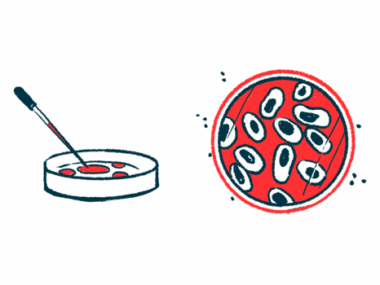PROTAC therapy shows promise for SBMA, study finds
ARD-1676 breaks down protein that's faulty in the condition
Written by |

ARD-1676, a medication that works by tagging toxic proteins for destruction in cells, promotes clearance of the androgen receptor (AR) protein, which is faulty and clumps in spinal and bulbar muscular atrophy (SBMA), a study found.
Earlier approaches to finding a treatment for SBMA have had little success in targeting the mutant AR protein. ARD-1676 is a proteolysis-targeting chimera (PROTAC), a small molecule that guides target proteins to the proteasome, the cell’s waste disposal system. These treatments “warrant further exploration as a treatment modality in SBMA,” the researchers wrote.
The study, “PROTACs therapeutically target the polyglutamine androgen receptor in spinal and bulbar muscular atrophy models,” was published in Neurotherapeutics.
SBMA is a rare genetic disorder that mainly affects men. It is caused by an abnormal expansion of a DNA segment in the X chromosome, called a CAG/polyglutamine (polyQ) repeat, which produces a large AR protein with an abnormal structure. Female carriers are relatively asymptomatic, because only the levels of blood androgens (sex hormones) seen in males lead to the transport of the polyQ AR protein to the cell nucleus and the protein’s alterations that drive disease.
PROTACs work by marking the target protein with characteristic cellular tags called ubiquitins. This signal directs the proteasome to break the protein down, and the PROTAC molecule is then recycled to be reused.
Testing compounds
A team led by researchers at the University of Michigan tested three PROTACs — ARD-2128, ARD-2585, and ARD-1676 — in cells engineered to produce polyQ AR with 112 CAG repeats.
All three compounds reduced AR levels. ARD-1676 acted fastest, lowering the toxic protein levels within one hour and maintaining the effect for 48 hours. Blocking either the PROTAC mechanism or the proteasome prevented this activity, confirming that ARD-1676 directly promoted protein degradation in the proteasome.
The compound was then tested in cells derived from SBMA patients. In motor neurons (specialized nerve cells that control movement) and skeletal muscle cells, a 24-hour treatment with ARD-1676 significantly reduced AR protein levels without harming cell survival. In muscle cells, the treatment also partially restored abnormal patterns of gene activity disrupted by the faulty AR protein.
Finally, the team tested ARD-1676 in AR113Q mice, a model of SBMA. A single oral dose of 30 mg/kg reduced AR protein in muscle within six hours without causing liver or kidney toxicity.
“These results provide compelling support for pursuing this novel therapeutic approach in SBMA and justify future long-term studies,” the researchers wrote.







